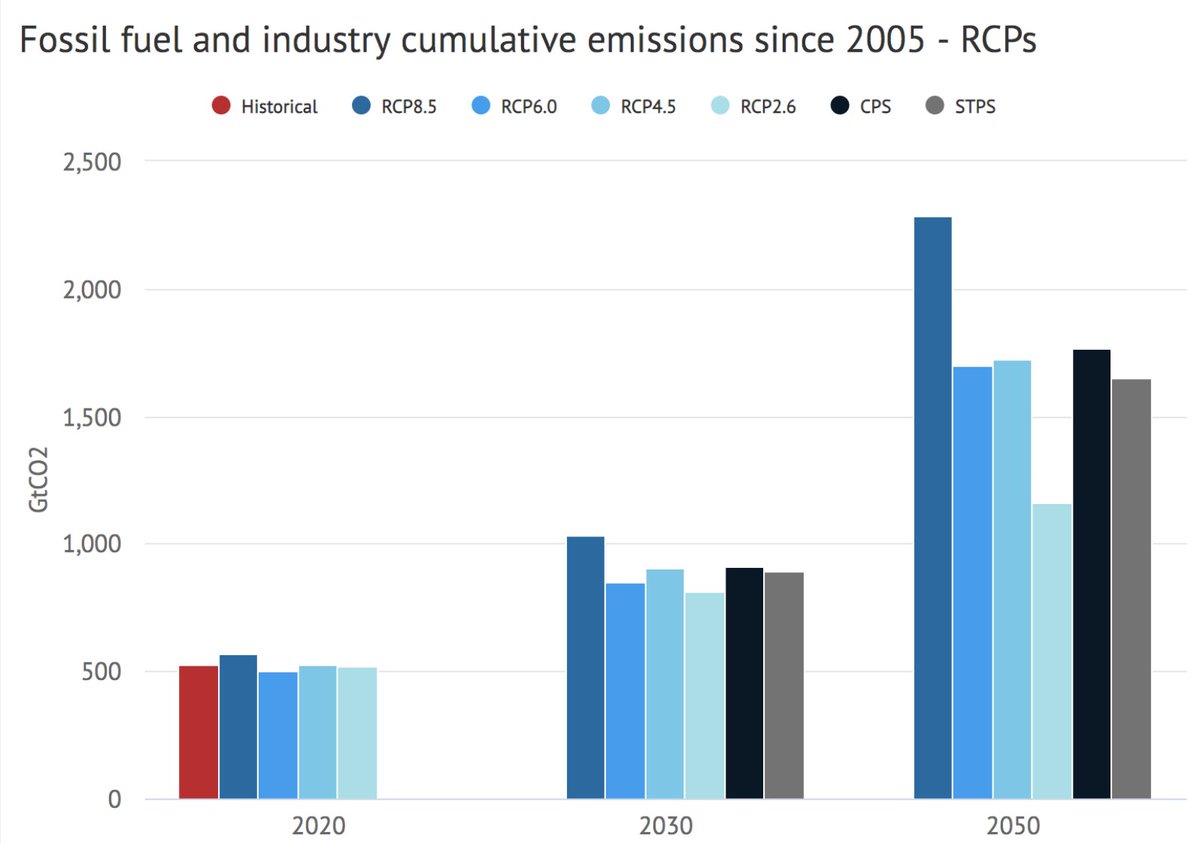
We (@Peters_Glen and I) have a new letter in the Proceedings of the National Academy of Sciences responding to a recent article by Schwalm et al on whether or not the RCP8.5 scenario is appropriate to use for near-term emissions (through 2050): pnas.org/content/early/… 1/15
Their original article suggested that RCP8.5 best matched historical emissions and what they identified as likely future emissions based on the IEA WEO fossil emission data and their own land use assumptions, at least through 2030 (and still reasonably close through 2050): 2/15 

We point out that when you only look at fossil emissions (e.g. fossil fuels and industry) this is not the case; IEA projections are much more in line with RCP4.5 or RCP6.0: 3/15 

So the IEA WEO projections themselves do not support RCP8.5 as the most likely scenario for cumulative emissions. Rather, its the assumption around non-fossil emissions – e.g. those from land use change – that Schwalm et al make that lead to their results. 4/15
Here two factors are at work: first, when the RCPs were created our best estimate of land use emissions was notably lower than our current estimate, meaning that all the RCPs (including 8.5) underestimate historical land use emissions. 5/15
Second, all RCPs – even 8.5 – assume a future decrease in land use emissions. Schwalm et al choose to create their own land use scenario by simply projecting trend over the past 15 years forward. This could happen, but is at odds with most scenarios in the literature. 6/15 

A world where land use emissions increase by 50% in the next three decades could indeed counteract much of the progress we have made in mitigating fossil emissions. We should avoid this, though at the same time its not necessarily a likely outcome today. 7/15
So effectively the match to near-term cumulative emissions that Schwalm et al. find in the RCPs is due to compensating errors of too-high fossil CO2 emissions and too-low land use emissions. 8/15
More broadly, we have a new set of scenarios out to replace the RCPs. In the SSPs historical and likely future cumulative emissions including both IEA fossil projections and Schwalm's land use numbers are closer to SSP1-4.5 or SSP1-6.0. 9/15 

All of these figures we created for our letter use the IEA's old 2019 WEO forecasts. If we were to update them to the new 2020 values, our conclusion that RCP8.5 is overstating likely near-term emissions would be even stronger: 11/15 

Schwalm et al also have a reply to our comment here thats worth reading, emphasizing that its total emissions rather than just those from fossil fuels that matter for the climate, and that land use emissions could increase faster than we expect: pnas.org/content/early/… 12/15
While their point on total emissions is clearly true, its also the case that fossil emissions increasingly dominate future emission scenarios over the course of the 21st century, accounting for almost all the increase above today's levels across all the RCP and SSPs. 13/15
So while its key that we get a better understanding of likely future land use emissions, its our emissions from fossil fuels – and our actions to reduce them – that will be the main factor determining future warming. 14/15
We've made real progress moving away from coal and making clean energy cheap, and its important that our future emission scenarios reflect the world as it is today rather than what might have been if coal dominated the 21st century energy landscape: thebreakthrough.org/issues/energy/… 15/15 

Also see Glen's thread:
https://twitter.com/Peters_Glen/status/1318639078284365824
• • •
Missing some Tweet in this thread? You can try to
force a refresh





